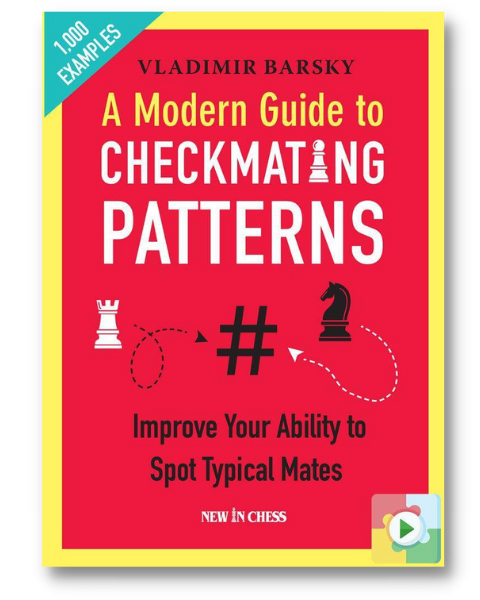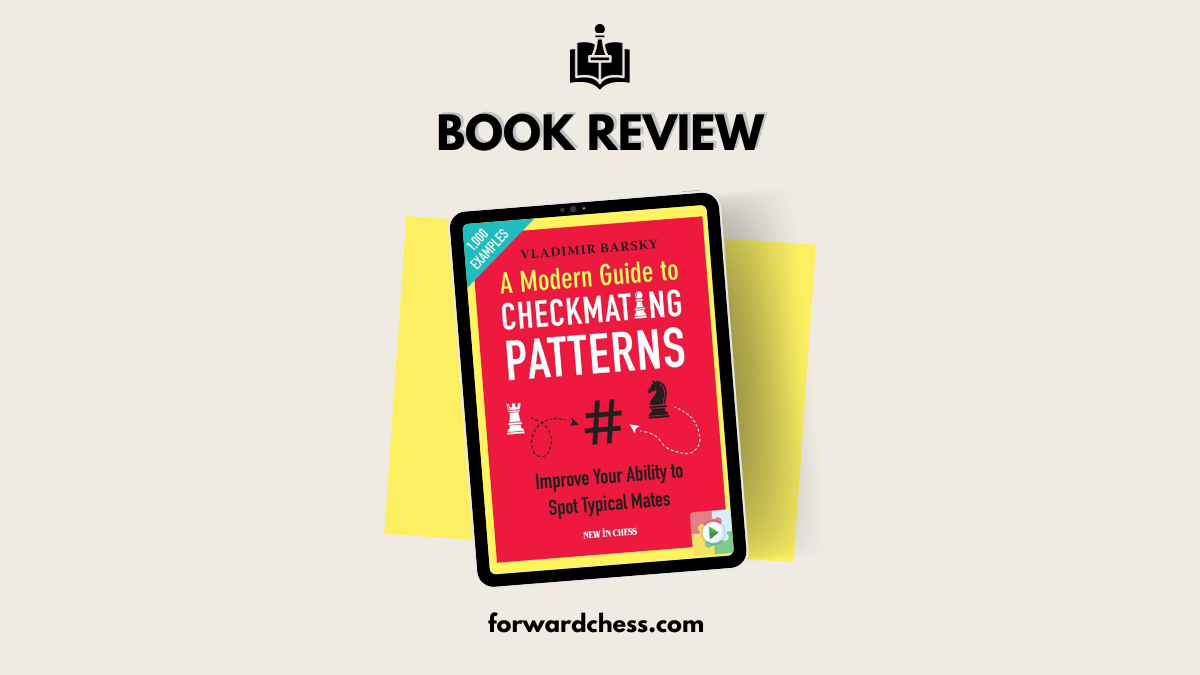Review of A Modern Guide to Checkmating Patterns
“Since all the pieces differ among themselves according to their range and rules of movement, each of them has its favorite ‘profession’”
– Viktor Lvovich, as quoted in this book.
This book is a sequel to 1000 Checkmate Combinations by Viktor Lvovich. The author of the current book, IM Vladimir Barsky, was the special editor of the re-issued version of that book. In the new book, Barksy has used the same basic structure as the original book together with examples of games played in the 21st century.

The checkmates in this book are arranged in an unusual, but logical, format. As the quote above suggests, Barsky has presented the checkmating patterns using the roles of the pieces as the underlying unifying principles in checkmate patterns. Hence, we see the roles of individual pieces, such as the queen or rook, as well as combinations of pieces, such as the queen and bishop. This contrasts to other classifications that are used in similar books, such as sacrificing material, a weak king position or a king stuck in the centre.
Each chapter starts with a discussion of the relevant checkmating pieces and shows the typical checkmating patterns that arise with these pieces using a series of mini boards. Readers can quickly look at these mini boards and memorise the patterns without having to deal with the clutter of a full board with extraneous pieces. This is an interesting and effective learning approach, because the pieces and the patterns are the basic ingredients of all checkmates. Here, the author agrees with Mikhail Tal, who wrote “Of course, chess creativity is not limited to what is set out here. Each player creates further, according to his talent and imagination. But as for that which can be known, there is no need to reinvent the wheel.”
The patterns are followed by some instructive examples to illustrate the typical checkmates that arise from the pieces under discussion, and then a set of exercises for the reader to solve. The solutions to the exercises are clear and detailed, and they enhance the learning experience. There are 851 exercises in the book, which will keep readers busy for quite some time. While not all positions end in checkmate, checkmate is the dominant theme in all of them.
Three examples from the book are given below, with annotations from the book.
In summary, this is an excellent textbook on checkmates. Barsky’s enthusiasm for the material is clear, and the book is easy to read while being highly instructive. The result is a great book on an important subject.
Have any thoughts or questions? Let us know in the comments!

- New Release: Chess Analysis – Reloaded - March 9, 2024
- Review: The Art of The Endgame – Revised Edition - February 14, 2024
- Review: Study Chess with Matthew Sadler - December 13, 2023
